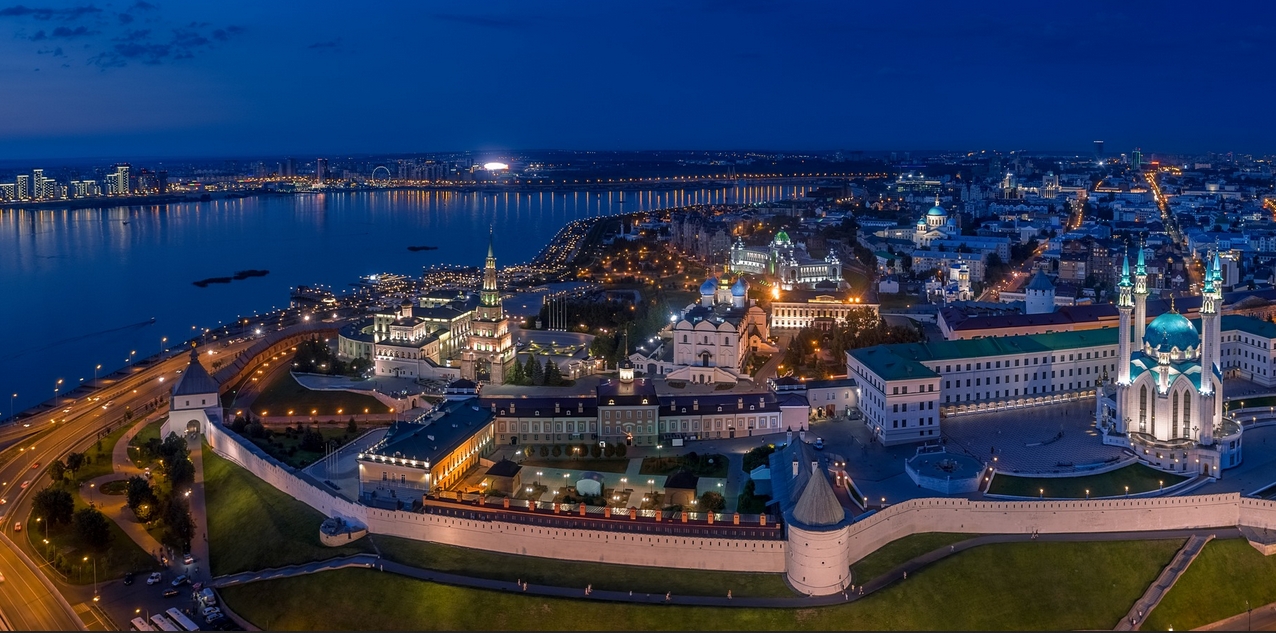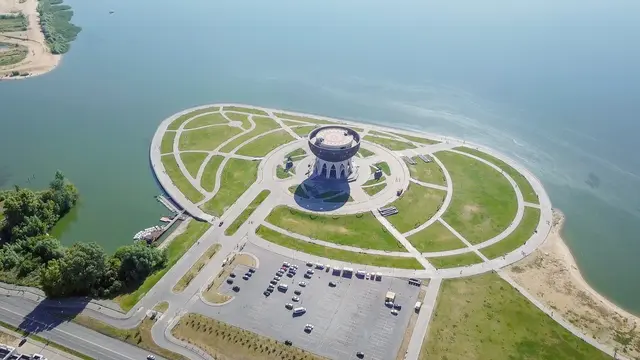
Location & General Overview
-
Where it is: Kazan lies in the western part of Russia, about 820 km east of Moscow, on the left bank of the Volga River, where it is joined by the Kazanka River.
-
Population & status: It’s the fifth largest city in Russia and the largest in the Volga Federal District. Kazan is the capital of Tatarstan—one of Russia’s more culturally diverse republics.
-
Heritage & identity: Kazan is often described as a meeting point between East and West. It has a strong Tatar identity (a Turkic people, Muslim majority in many areas) alongside Russian Orthodox influences. The city’s architecture, food, festivals, and everyday life reflect this mix.
History in Brief
-
Early origins: Archaeological evidence suggests settlements in the Kazan area more than 1,000 years ago. Kazan began to emerge as a more structured settlement in the times of the Golden Horde, after the decline of Volga Bulgaria.
-
Khanate era: The Khanate of Kazan was a powerful Tatar state. It flourished until the mid‑16th century, when Ivan the Terrible besieged and captured Kazan in 1552, integrating it into the expanding Russian state.
-
Imperial and Soviet periods: After the Khanate, the city was rebuilt under Russian rule. It saw hardships (wars, fires, rebellions), but also periods of cultural and industrial growth. Under Soviet rule, Kazan was made the capital of the Tatar ASSR (Autonomous Soviet Socialist Republic). In modern Russia, it remains an important scientific, cultural, and political centre.
Top Attractions & Things to See
-
Kazan Kremlin (Kreml')
A UNESCO World Heritage Site, the Kremlin is the heart of Kazan, perched where the Volga and Kazanka meet. It holds several important monuments: the Kul Sharif Mosque, Annunciation Cathedral, the Suyumbike Tower, and various museums including the Museum of Islamic Culture and the Museum of the Cannon Yard. -
Kul Sharif Mosque
Reconstructed in the early 2000s, this mosque is one of Kazan’s signature architectural symbols. It is modern yet inspired by the city's Tatar heritage, and was built near the location of the original mosque that stood in the Kremlin and was destroyed in 1552. -
Bauman Street (Bauman Prospekt)
A pedestrian street in the city centre filled with shops, cafés, restaurants, street performances, and historical architecture. It runs from the Kremlin to Tukay Square. Great for strolling, shopping, and absorbing local culture. -
Mosques and religious architecture
-
Nurulla Mosque: built in the mid‑19th century, restored in recent decades.
-
Soltan Mosque: with its distinctive minaret and mix of Tatar‑Bolghar architectural style and national romance style.
-
Thousandth Anniversary of Islam Mosque: built to commemorate 1,000 years since the Volga Bulgars adopted Islam (in 922), located across the Kaban Lake.
-
-
Kazan Zoological and Botanical Garden
A peaceful escape from the urban bustle: over 1,000 species of plants and more than 160 kinds of animals. Great for families or anyone interested in nature.

Culture, Food & Events
-
Cuisine: Kazan is known for its Tatar cuisine—rich, hearty, and flavorful. Look out for dishes like chak‑chak (sweet fried dough, honey), talkysh kaleve, various meat dishes, and soups.
-
Festivals & celebrations: The city regularly hosts cultural, religious, and sporting events. In 2005, Kazan celebrated its 1000th anniversary. It has hosted international sporting events (2013 Universiade, matches during the 2018 FIFA World Cup).
-
Languages & people: Tatar and Russian are common. Many residents are bilingual, and culture is inclusive. Islamic and Orthodox Christian communities live side by side. Religious architecture reflects both faiths.
Transportation & Getting There
-
By air: Kazan International Airport is well connected. In 2023, it handled over 5.2 million passengers.
-
Within the city: Public transport includes buses, trams, and a metro system. Taxis and ride‑shared options are available. Many of the major attractions are reachable via the city centre.
-
Tourist Information: Helpful offices are located at the airport (arrival terminal), on Bauman Street, and in the Tatarstan Hotel. They can help with maps, directions, tickets, etc.
Best Times to Visit & Practical Tips
-
Best season: Late spring through early autumn (May to September) offers mild weather and is ideal for walking around and outdoor activities. Winters are cold, but snowy winter scenes have their own beauty.
-
Accommodation: Kazan has over 150 lodging options, from budget guesthouses to high‑end hotels. If you book ahead, you can stay close to the Kremlin or Bauman Street to be near many attractions.
-
What to pack: Layers are good—weather can vary. Comfortable walking shoes, modest clothing if you plan to visit religious sites. A phrasebook or translation app helps, especially outside the most touristy places.
-
Money & costs: The currency is the Russian Ruble. Many places accept cards, but having some cash is wise. Restaurants and entrance fees in major attractions are reasonable compared to many Western European capitals.
-
Etiquette & safety: Respect religious customs (for mosques, dress modestly, remove shoes if required). Kazan is generally safe for tourists; common‑sense behavior suffices. Local people are known for hospitality.
Why Kazan Should Be on Your Travel Bucket List
-
It’s a city that lives its history: the architecture, the museums, and even street layouts narrate centuries of culture—Volga Bulgaria, the Khanate, Russian Empire, Soviet, modern Russia.
-
The fusion of cultures gives Kazan a rich and varied identity: Tatar, Russian, Islamic, Orthodox Christian. This shows up in cuisine, art, festivals, and daily life.
-
It’s accessible: well served by transport, with good hospitality infrastructure. Whether you’re after history, food, religious architecture, or simply a walk in charming old streets, Kazan offers it.
-
Value for visitors: Compared to big European capitals or major cities, many things (food, lodging, entrance fees) can be more affordable, while the experience remains rich.

You must be logged in to post a comment.